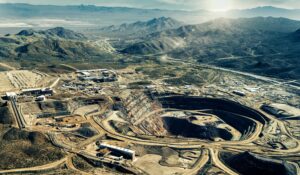Subscribe for Investment Insights. Stay Ahead.
Investment market and industry insights delivered to you in real-time.
Jamie Strauss is the Founder and CEO of Digbee, the leading sustainability disclosure and assurance platform built specifically for the mining sector. Under his leadership, Digbee has become widely acknowledged by Tier 1 capital providers as the industry’s trusted solution for credible, asset-level sustainability performance. Jamie is also a Director of Altius Minerals and a Trustee of the Julian Baring Scholarship Fund.
A successful entrepreneur, Jamie previously founded and led a mining finance boutique, which he built into a market leader before selling it to BMO Capital Markets. His career reflects a deep commitment to enhancing transparency, responsibility, and performance in the global mining industry.
Let’s be honest: ESG has become a loaded term. For many, it’s synonymous with bureaucracy, endless paperwork, and a detached compliance exercise. But that’s not what investors want. They want impact — real, measurable risk mitigation and responsible growth that enhances long-term value. It’s time we stop hiding behind the acronym and start talking about what really matters: de-risking, responsible development, and operational excellence.
From ESG to real strategy
The mining sector stands at a pivotal crossroads. Over the past decade, ESG reporting has exploded—policies, frameworks, and glossy PDFs abound. Yet for all the noise, how much of this is truly helping companies operate more responsibly or attract more capital?
There’s a world of difference between value-adding sustainability actions and the tick-box compliance culture ESG has too often become. The former protects social license, gets projects through permitting, and ensures smoother due diligence. It provides a tangible tool for boards and management to make informed, strategic decisions. The latter clutters the landscape with irrelevant metrics, opaque ratings, and cynical “green” slides buried in corporate presentations. Investors see through it—and they’re tired of it.
ESG is dead. Long live responsible investing
The so-called “death of ESG” is not a retreat from responsibility—it’s a reset.
Capital is flowing away from labels and into businesses that can prove they are prepared, agile, and trustworthy. This is where mining has an extraordinary opportunity to rebrand and reposition.
The fundamentals of mining haven’t changed: we operate in remote locations, manage sensitive relationships, and are judged by how we handle complexity under pressure. What’s changed is that capital markets now reward companies that bake sustainability into strategy—not those that bolt it on after the fact.
But it’s not just investors. Offtakers are demanding greater supply chain resilience, wary of sourcing disruptions caused by social or environmental blowback. M&A teams are increasingly cautious—wary of acquiring permitting risk, social opposition, or underreported liabilities. Lenders are tightening terms where projects lack a credible sustainability footing.
The winners will be those who embrace this shift. The losers? Companies that treat sustainability as a PR afterthought will find themselves increasingly isolated: higher cost of finance, diminished trust, and a shrinking pool of willing investors and partners.
Capital is watching
Investors, particularly institutional and project finance providers, are increasingly driven by risk-adjusted returns. They don’t want to be caught off guard by a social conflict, community protest, or governance scandal that derails a project. They want to know you’re ready—that the business is resilient, that stakeholder risks are mapped and mitigated, that climate and water strategies are integrated into cost and schedule planning.
In other words, capital wants comfort.
As Sylvain Eckert, a Partner at the French Government backed critical mineral fund managed by Infravia, explains “Sustainability is central to our investment mandate—not only because it reduces operational and reputational risk, but because it highlights management teams that are truly forward-thinking and capable of delivering long-term value.”
A shallow reference to sustainability buried in a corporate deck doesn’t cut it. It undermines the sector’s serious efforts to transform and fails to communicate the material impact of good sustainability on timelines, cost, and performance.
Discounted futures for the unprepared
For companies unwilling to evolve, the consequences will be stark. The cost of capital will rise. The trust deficit will grow. And the gap between responsible operators and the rest will widen. Worse, projects may never make it to production—blocked by permitting delays, social resistance, or the simple fact that no bank will touch them.
The market is already sorting the leaders from the laggards. Those who integrate sustainability into the core of their business are securing better financing, navigating regulatory hurdles more smoothly, and winning long term support from communities and investors alike.
This is just good business
Look at companies like Agnico Eagle or the Lundin family of companies—organisations that consistently underpromise, overdeliver, and demonstrate humility, preparation, and resilience. They don’t boast about ESG. They focus on doing the right things well, embedding sustainability in their strategy, and staying ready when issues inevitably arise. It’s not about virtue signalling. It’s about staying in business, on time, and on budget.
The bottom line? It’s time to move beyond ESG as an acronym and reframe the conversation. This isn’t about reporting. It’s about responsible growth, de-risking, and smart strategy. Investors are watching—and they’re ready to reward companies who take it seriously.
Because in the end, sustainability isn’t a cost. It’s a competitive advantage.
Subscribe for Investment Insights. Stay Ahead.
Investment market and industry insights delivered to you in real-time.




















